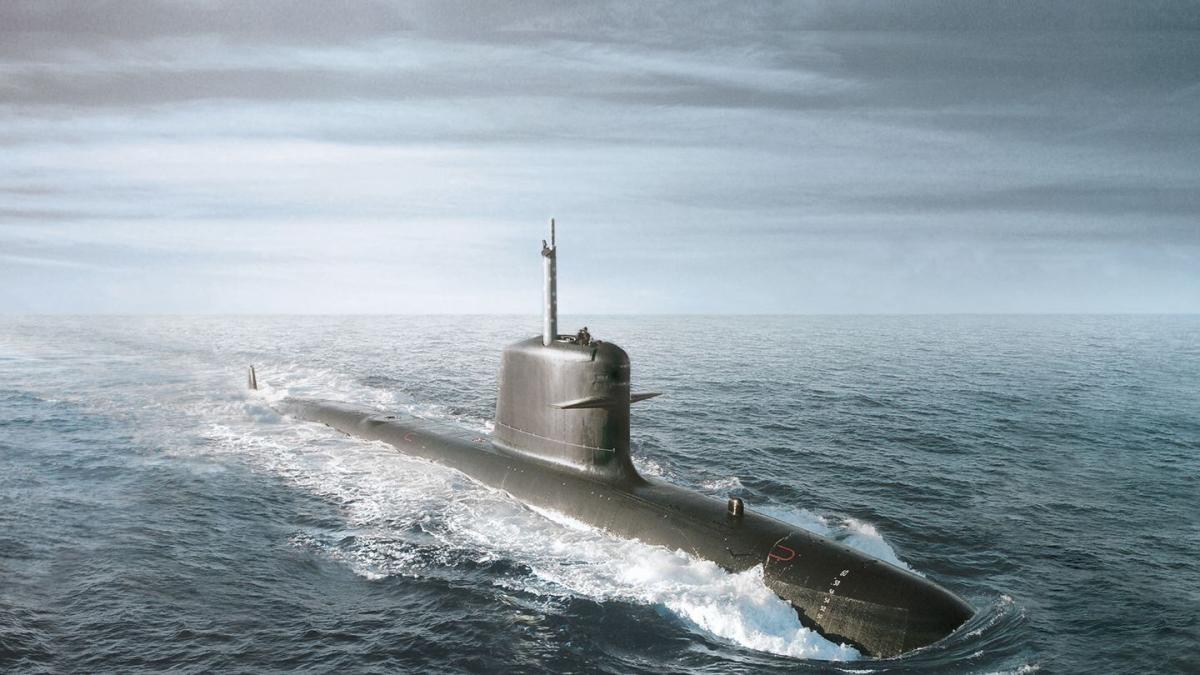The two companies will jointly build the boats under the deal, inked March 28.
The Indonesian Navy’s future submarines are described as Scorpene Evolved Full LiB submarines featuring lithium-ion batteries, according to Naval Group’s news release. Indonesia’s Scorpenes are to be the first to use such battery technology.
The French shipbuilder stated the lithium-ion technology allows for more efficient energy, a decreased snorkeling rate and a reduced charging time.
The boats will be “built in Indonesia in a PT PAL shipyard, through transfer of technology from Naval Group,” per a joint news release.
Their assembly in Surabaya follows an August 2021 defense cooperation agreement between Paris and Jakarta as well as a memorandum of understanding for two Scorpenes signed by the two shipbuilders in February 2022.
“This step is a high commitment and trust of the Indonesian government in the capability of local engineers to advancing defense technology, especially submarine technology,” according to Kaharuddin Djenod, the president director of PT PAL. “In the future, Indonesia is expected to be able to master submarine technology.”
Germany and South Korea were also vying for this contract. This latest deal confirms Indonesia has abandoned a 2019 agreement to buy a second trio of Nagapasa-class submarines from South Korea.
Collin Koh, a senior fellow at the Institute of Defence and Strategic Studies with Singapore’s S. Rajaratnam School of International Studies, told Defense News it’s interesting Indonesia didn’t choose Korean submarines, given PT PAL gained experience assembling the Nagapasa class and that the type would have ensured commonality in the fleet. However, it’s likely France likely offered the best package and offsets, Koh said.
“I believe Indonesia probably saw benefits from the tech transfer that could enrich the local submarine industry going forward because ultimately Indonesia wants to build its own submarines,” he said, noting the French firm was “way more aggressive in marketing their wares.”
Under the Korean program that saw three Nagapasa-class submarines commissioned from 2017 to 2021, “PT PAL was able to master at least a rather reasonable local capability,” Koh said. However, this French project “will allow it to absorb and grow” other technologies.
PT PAL has already prepared for local construction. In February 2022, it issued a tender for development and construction of a ship lift and transfer system capable of moving 2,000-ton submarines.
The companies did not divulge the value of the latest contract, but Indonesia’s Ministry of Finance approved a request for $2.16 billion in foreign loans for two submarines last year.
Crewed by 31 personnel, the 72-meter-long (233-foot-long) platforms have six launch tubes and carry 18 torpedoes or missiles. Depending on exact configurations, the type displaces 1,600-2,000 tons, can remain submerged for at least 12 days, and can operate on missions lasting 80 days.
Should construction commence next year, the first boat could join service in 2033, based on the comparative build rate of India’s Scorpene program.
The Indonesian Navy is seeking 12 submarines in total.
